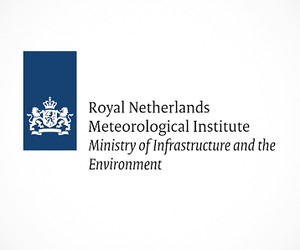Copernicus Sentinel-5P reveals new nasties
With air quality a serious environmental health problem, the Copernicus Sentinel-5P satellite is tasked with mapping air pollutants around the entire globe every day. This new mission has been providing data on carbon monoxide, nitrogen dioxide and ozone since July and now other polluting nasties such as sulphur dioxide and formaldehyde have joined the list of data products available to monitor the air we breathe.
Air pollution affects people in developed and developing countries alike. In Europe alone, it is estimated that every year 400 000 people die prematurely because of poor air quality.
Satellite data and computer models are the only real way of showing how pollution accumulates around the world as a whole. In the immediate term, these tools are essential for forecasts and warnings on air quality. In the longer term they are indispensable for providing accurate information for decision-makers developing strategies to tackle this major problem.
Launched in October 2017, Copernicus Sentinel-5P – short for Sentinel-5 Precursor – is the first Copernicus satellite dedicated to monitoring our atmosphere. It is part of the fleet of Copernicus Sentinel missions that ESA develops for the European Union’s environmental monitoring programme.

The satellite carries an advanced multispectral imaging spectrometer called Tropomi. What sets Tropomi apart is that it detects the unique fingerprints of atmospheric gases in different parts of the electromagnetic spectrum to image a wide range of pollutants more accurately and at a higher spatial resolution than ever before.
Since this state-of-the art satellite mission was launched, scientists have been carefully evaluating its data and, in turn, releasing the data to users.
Streams of data on carbon monoxide, nitrogen dioxide, ozone, along with information on aerosols and clouds have been available since July. On 17 October, sulphur dioxide and formaldehyde joined the list of air pollutants routinely available for services such as air-quality forecasting and volcanic ash monitoring.
The Copernicus Atmospheric Monitoring Service is a key user of these data products.
Head of the service, Vincent-Henri Peuch, said, “Even looking at social media, we see that Copernicus Sentinel-5P is proving to be a great ambassador for environmental monitoring and for taking action on air pollution. But the mission does much more than give us images.
“This is a sophisticated mission designed to measure the comprehensive set of atmospheric constituents for underpinning several of the CAMS information products. We are already using observations of ozone and nitrogen dioxide, which have been available routinely since July.

“We are really excited about using these new sulphur dioxide and formaldehyde data in our operational services. Copernicus Sentinel-5P data is also about to make its way into everyone’s pockets as our products are being taken up by leading smartphone applications to inform the public on current air quality.”
Sulphur dioxide affects air quality badly and can lead to breathing problems. While it is released into the atmosphere mainly through industrial processes, it is also present in volcanic plumes.
Monitoring the spread of volcanic plumes is critical for aircraft safety.
Nicolas Theys from the Royal Belgian Institute for Space Aeronomy said, “Copernicus Sentinel-5P’s near-realtime data on sulphur dioxide and aerosols are being used in the Support to Aviation Control Service and in the European Natural Disaster Coordination Information System for Aviation.
“The unprecedented level of details offered by the mission allows Volcanic Ash Advisory Centre users to better track and forecast the dispersion of volcanic plumes.”
The latest data release also includes formaldehyde, which tends to enter the atmosphere from forest fires and wood processing, for example. It is an important intermediate gas in the oxidation of methane and other hydrocarbons. While it is short-lived in the atmosphere, it reacts chemically to become a major source of carbon monoxide – another harmful pollutant.

Improved total ozone columns are now also available to enable long-term ozone monitoring from space.
Each of the Copernicus Sentinel missions carries state-of-the-art technology to deliver a stream of complementary imagery to help manage the environment effectively and respond to global change. The European Commission leads the Copernicus programme. ESA is responsible for the space component, which includes the family of Copernicus Sentinel satellite missions. Data are used worldwide and are free of charge.
Josef Aschbacher, Director of ESA’s Earth Observation Programmes, underlined, “The Copernicus Sentinel-5P mission is a prime example of how Europe works together for the benefit of its citizens.
“The European Commission as leader of the Copernicus programme, ESA as the coordinator, developer and operator of the space component are, together with the respective Member States, the prime drivers of Copernicus.
“In the case of Sentinel-5P, the Tropomi instrument provided by The Netherlands highlights the tight cooperation across Europe. Copernicus is indeed a success story for Europe in space.”















 Germany
Germany
 Austria
Austria
 Belgium
Belgium
 Denmark
Denmark
 Spain
Spain
 Estonia
Estonia
 Finland
Finland
 France
France
 Greece
Greece
 Hungary
Hungary
 Ireland
Ireland
 Italy
Italy
 Luxembourg
Luxembourg
 Norway
Norway
 The Netherlands
The Netherlands
 Poland
Poland
 Portugal
Portugal
 Czechia
Czechia
 Romania
Romania
 United Kingdom
United Kingdom
 Slovenia
Slovenia
 Sweden
Sweden
 Switzerland
Switzerland


































